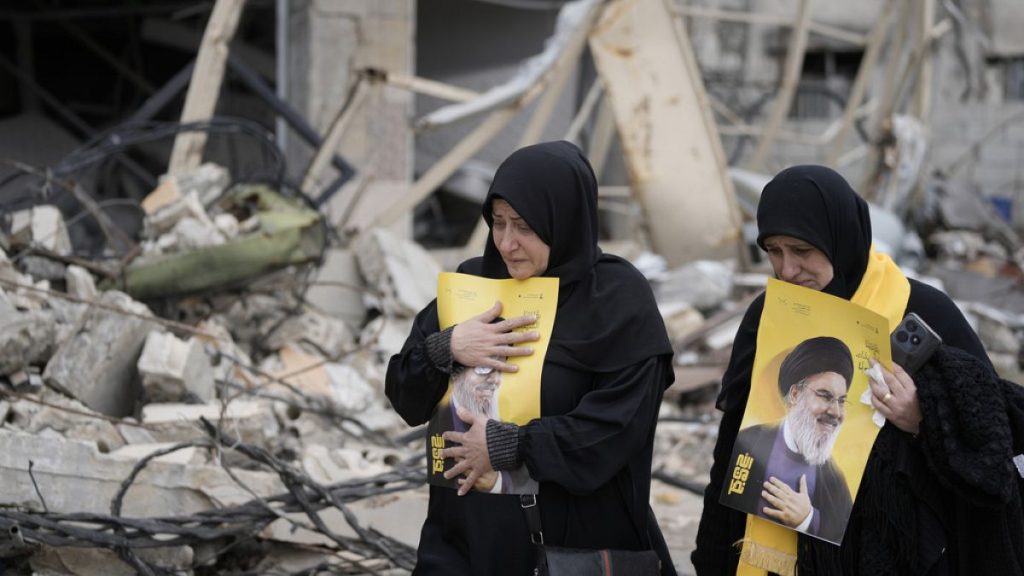The fragile peace established by the November ceasefire between Israel and Hezbollah teeters on the brink of collapse following a deadly clash at the Lebanese border. Israeli forces opened fire on protesters demonstrating against Israel’s continued occupation of Lebanese territory, resulting in the deaths of at least fifteen individuals, including two women and a Lebanese soldier, and injuring over eighty others. The protesters, some carrying Hezbollah flags, were attempting to enter villages along the border to assert Lebanon’s sovereignty and demand Israel’s adherence to the ceasefire agreement, which stipulated a 60-day withdrawal deadline. The incident has ignited tensions and sparked condemnation from Lebanese officials and international bodies, raising concerns about the escalating instability in the region.
At the heart of the conflict lies a standoff regarding the deployment of Lebanese armed forces in the border region. Israel justifies its continued presence by asserting that the Lebanese army has not fully deployed to prevent Hezbollah’s return to the area. Conversely, the Lebanese army maintains that it cannot deploy until Israeli forces withdraw, creating a circular impasse that fuels the ongoing tension. This disagreement underscores the deep mistrust between the two sides and highlights the complexities of implementing the ceasefire agreement. The lack of a clear mechanism for coordinated withdrawal and deployment has created a vacuum, exploited by protesters frustrated by the perceived inaction and continued Israeli presence.
The incident has further intensified the already strained relationship between Israel and Lebanon. The Israeli military attributed the protests to Hezbollah, accusing the group of orchestrating the demonstrations to escalate the situation and divert attention from its internal challenges. Israel claims its troops fired warning shots in response to perceived threats from individuals approaching their positions and detained several suspects for questioning. This narrative contrasts sharply with the Lebanese perspective, which views the protests as a legitimate expression of popular discontent with Israel’s occupation. The conflicting accounts of the events underscore the deeply entrenched narratives and mutual suspicion that characterize the relationship between the two countries.
Lebanese officials have strongly condemned the Israeli actions, emphasizing Lebanon’s sovereignty and territorial integrity. President Aoun declared these principles non-negotiable and urged trust in the Lebanese Armed Forces to protect civilians. Parliament Speaker Berri, a key figure in the ceasefire negotiations, described the violence as a “clear and urgent call” for international intervention to compel Israel’s withdrawal from occupied Lebanese territories. These statements reflect the growing frustration within Lebanon over Israel’s continued presence and the perceived lack of international pressure to enforce the ceasefire agreement.
The international community, particularly the United Nations, has expressed grave concern over the escalating tensions and the failure to implement the ceasefire agreement. UN officials, including Special Coordinator for Lebanon Jeanine Hennis-Plasschaert and UNIFIL mission head Lt. Gen. Aroldo Lázaro, have urged both sides to honor the agreement and de-escalate the situation. The UN has emphasized the urgent need for the withdrawal of Israeli forces, the removal of unauthorized weapons south of the Litani River, and the redeployment of the Lebanese army. The UN’s statement acknowledging the unmet timelines of the ceasefire underscores the precarious nature of the peace and the potential for further violence.
The incident at the Lebanese border serves as a stark reminder of the fragility of the ceasefire and the underlying tensions that continue to simmer between Israel and Hezbollah. The failure to fully implement the agreement’s provisions, coupled with the mutual distrust and conflicting narratives, has created a volatile environment ripe for escalation. The international community faces the daunting challenge of mediating a lasting solution that addresses the core issues fueling the conflict while ensuring the safety and security of civilians caught in the crossfire. The displacement of over a million Lebanese, with a significant number still unable to return home, further underscores the humanitarian cost of the conflict and the urgent need for a peaceful resolution. The incident highlights the precarious balance between peace and conflict in the region and the importance of sustained diplomatic efforts to prevent further bloodshed and instability.














